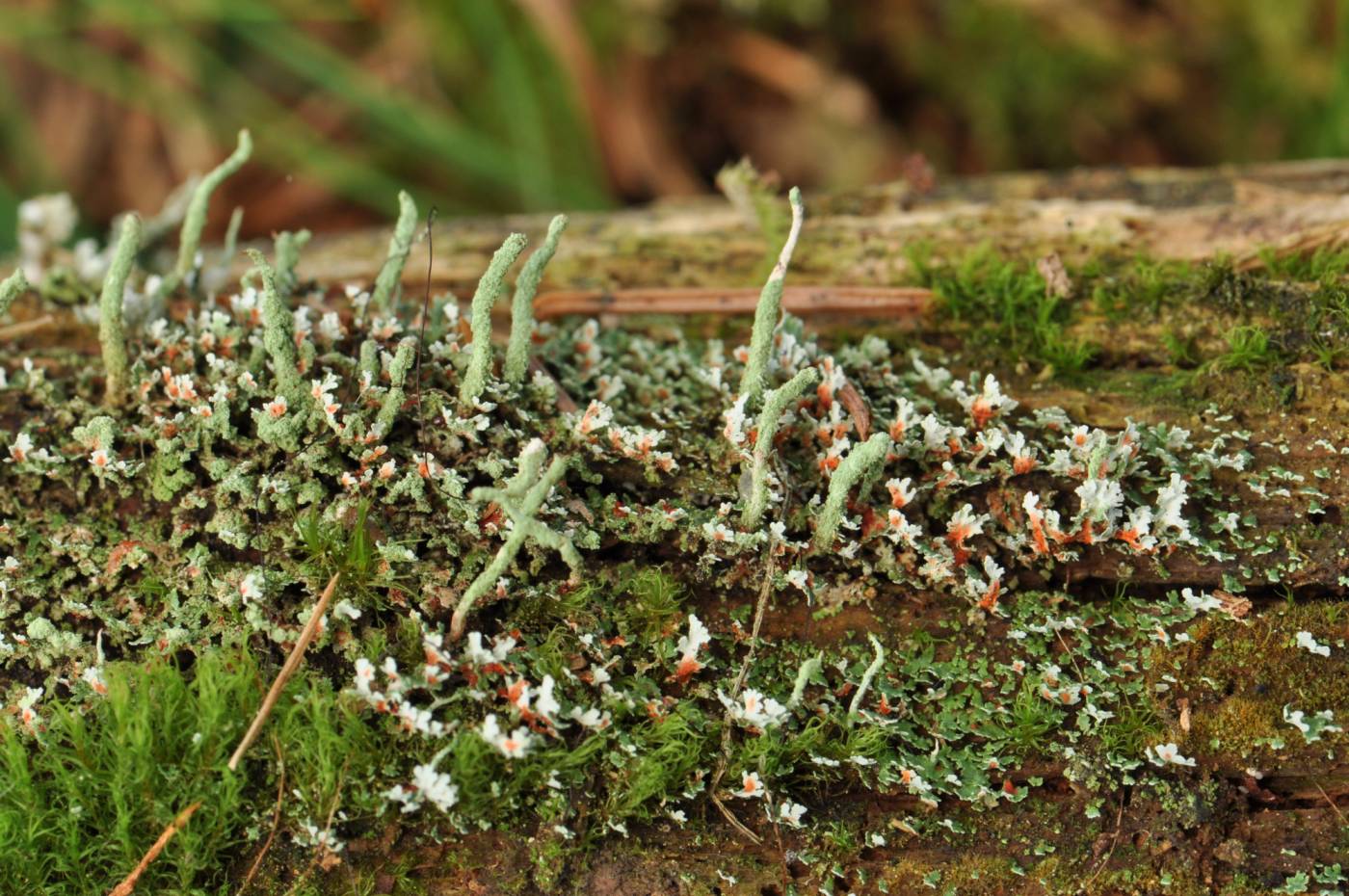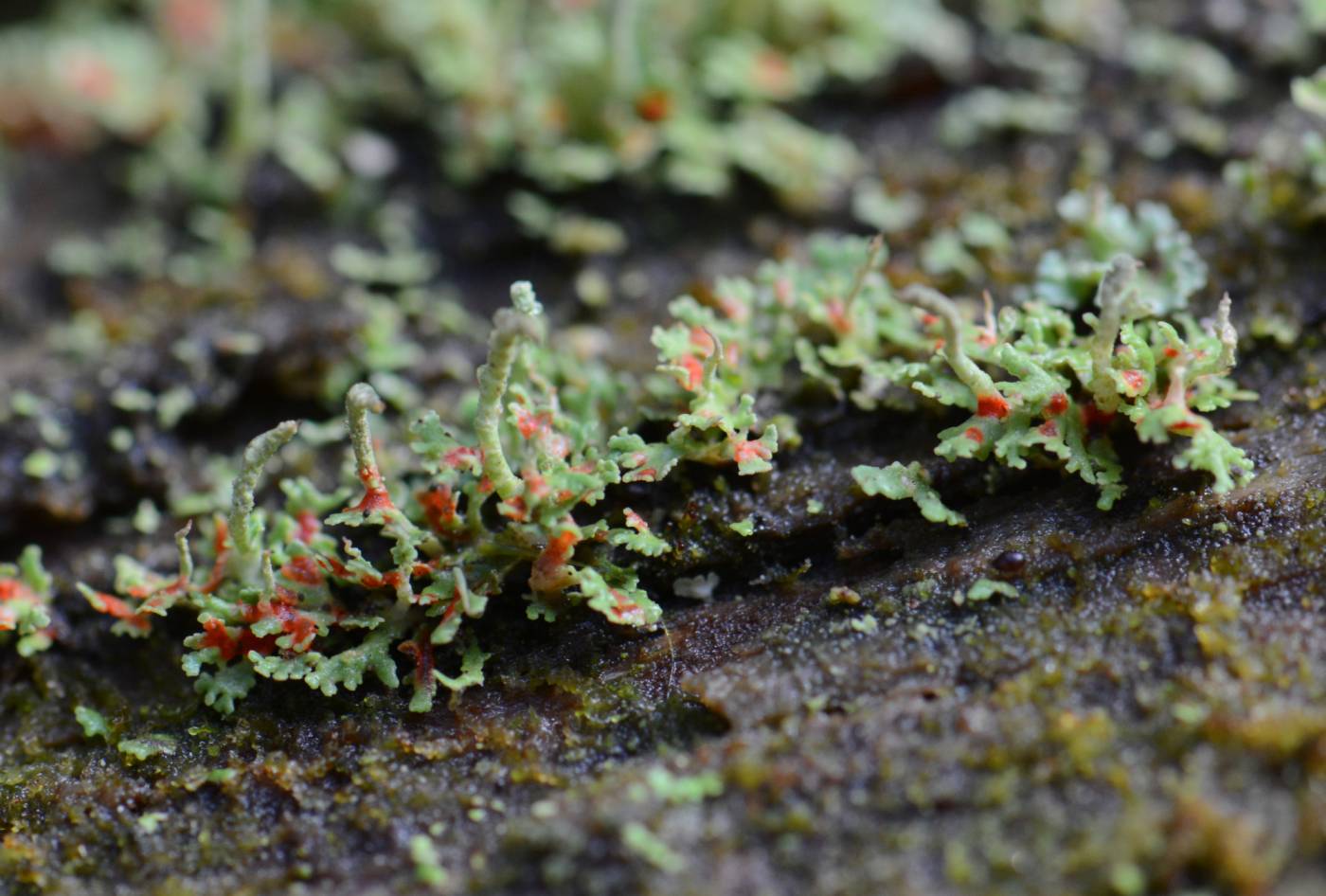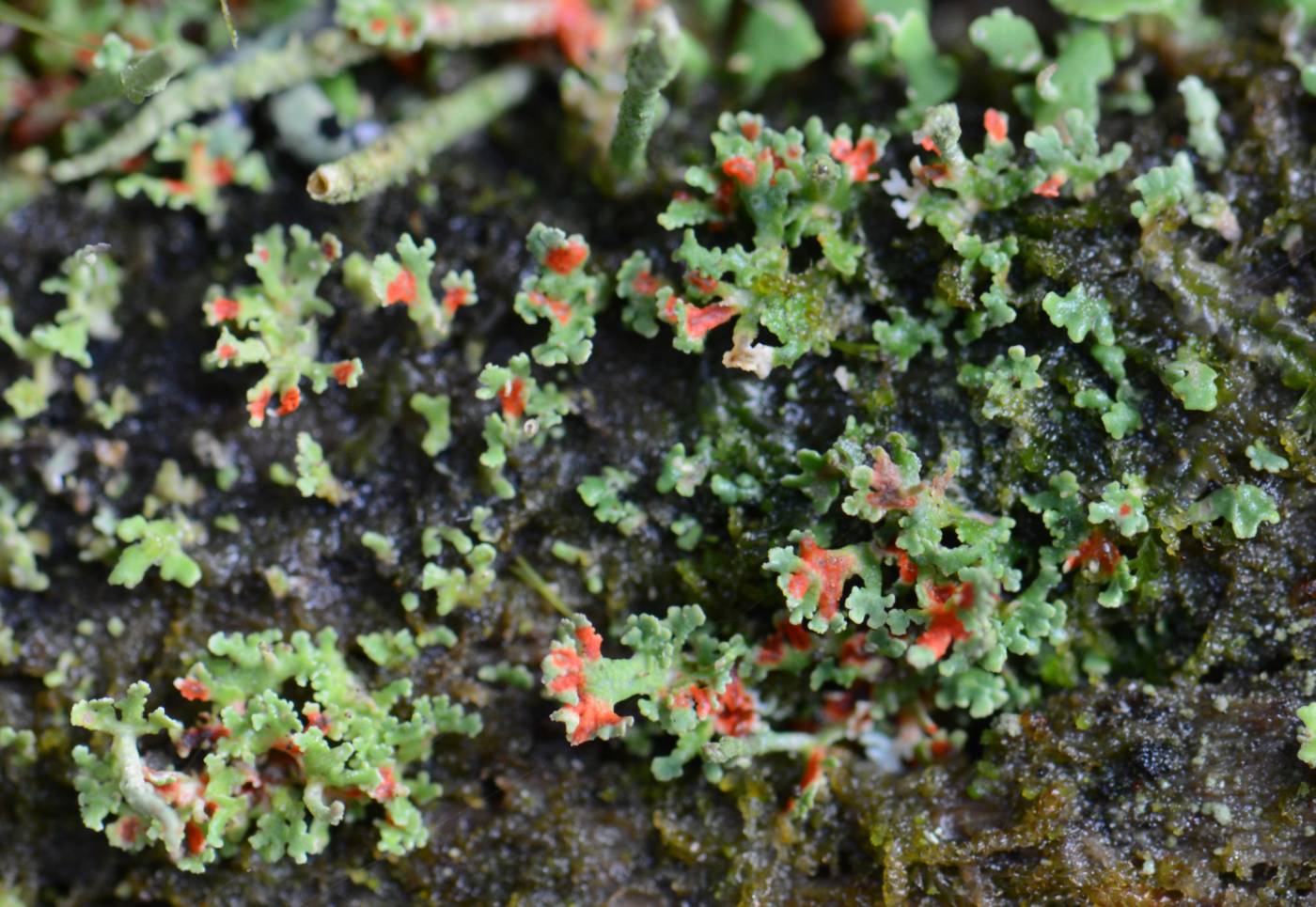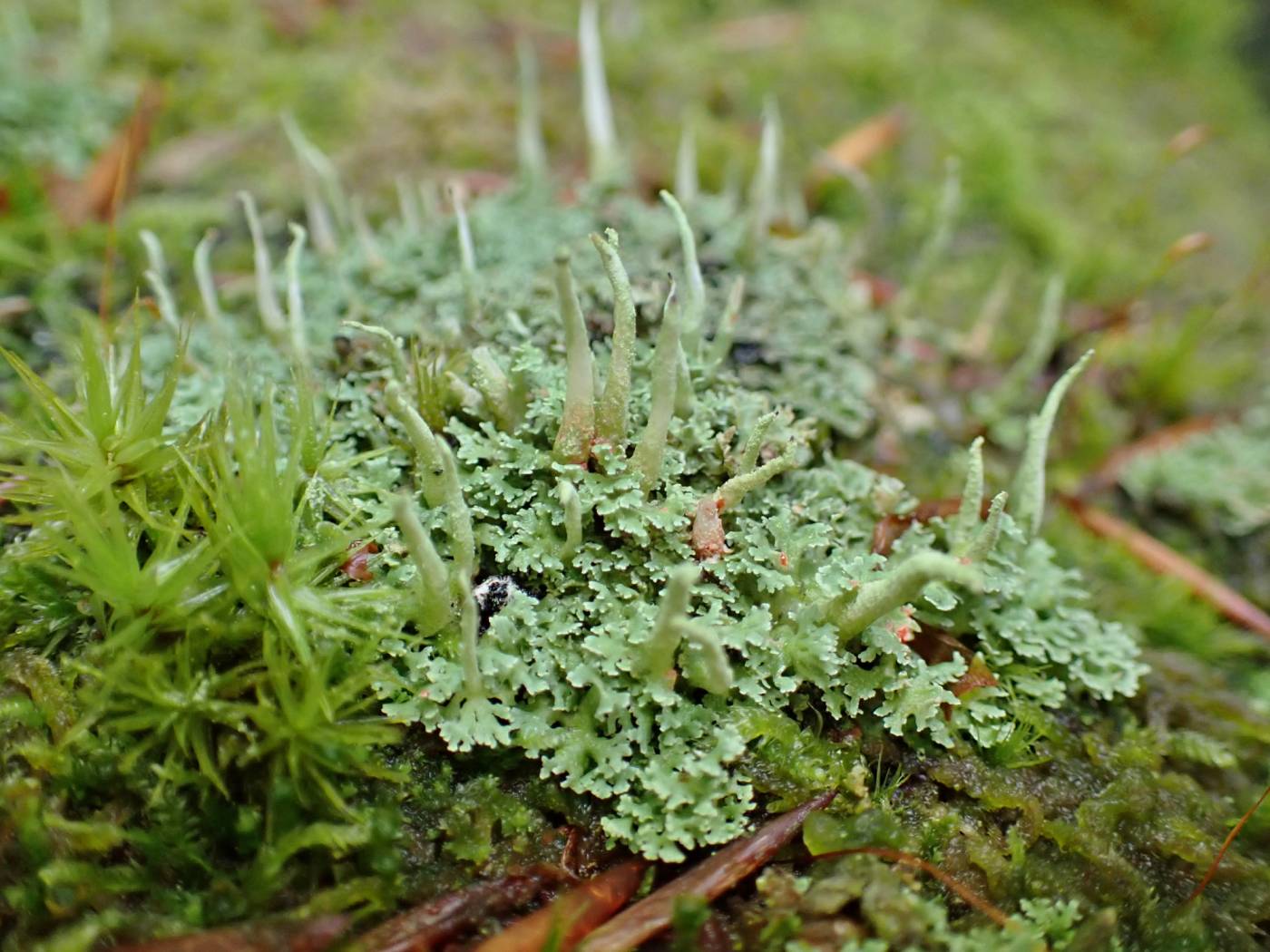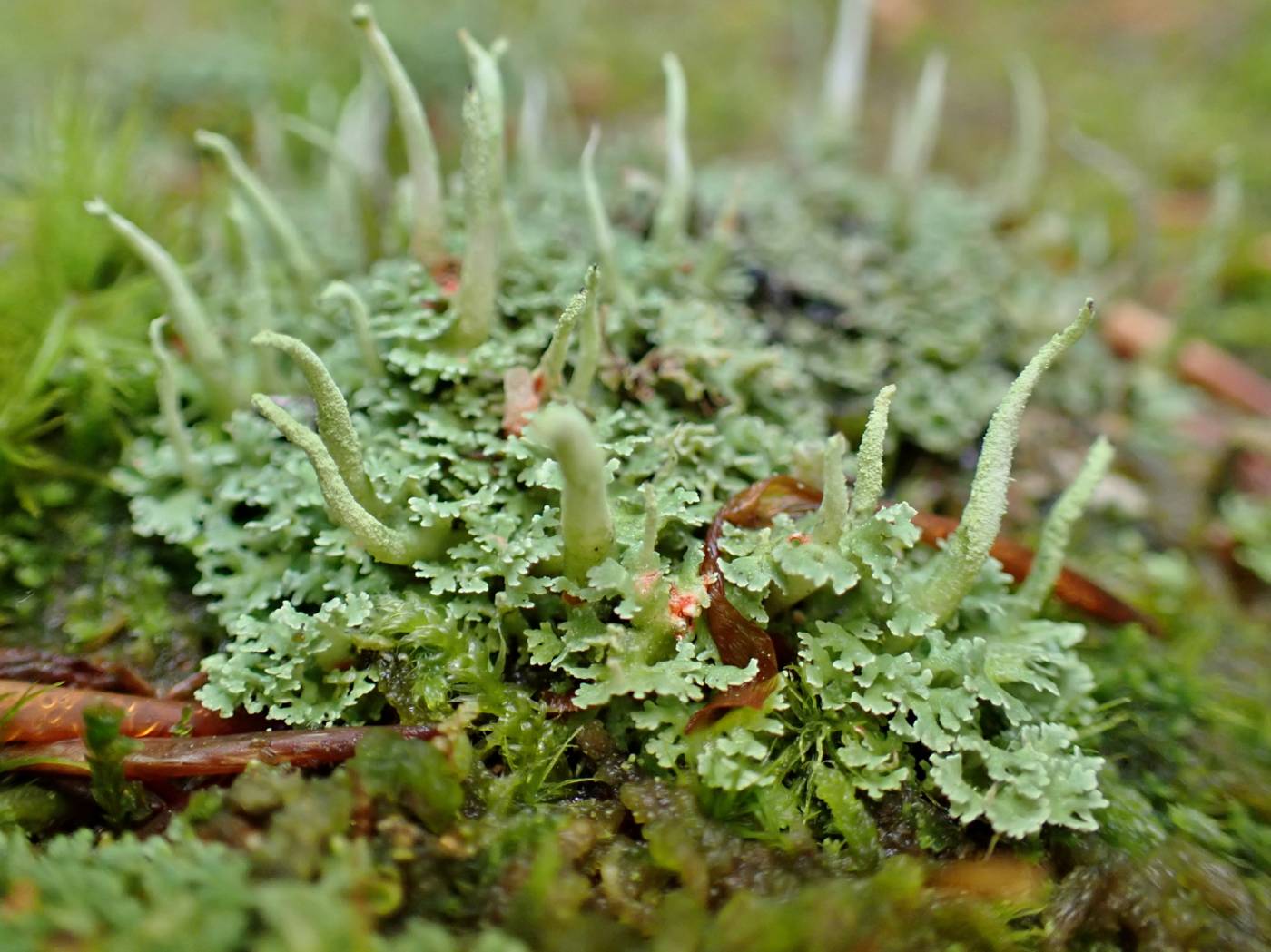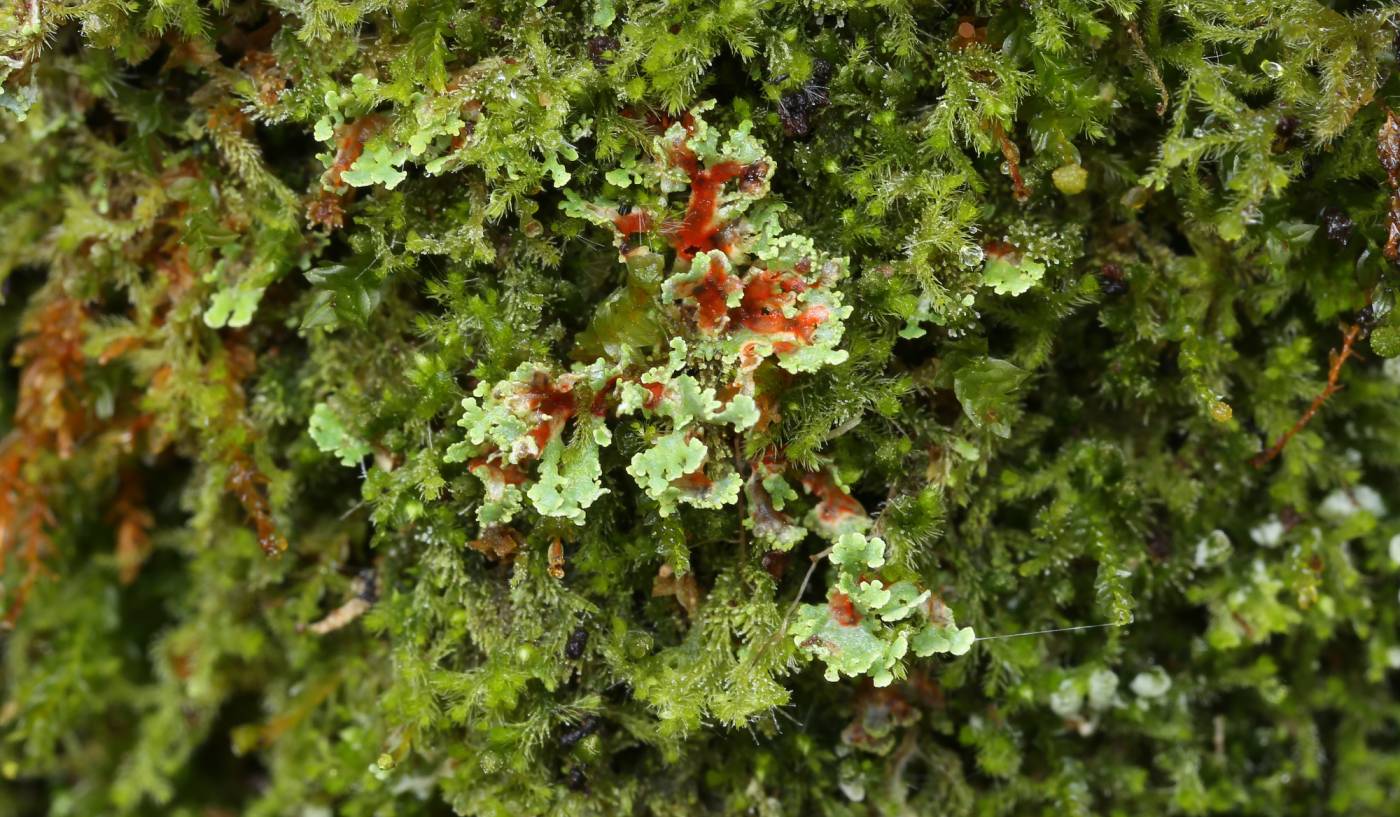A Cladonia species with ascyphose podetia, similar to the common C. coniocraea, from which it differs in the secondary metabolites content (barbatic and 4-O-demetylbarbatic acid). Its thallus is usually covered with conspicuous red spots caused by the production of rhodocladonic acid as a result of the presence of yet unknown parasitic mites.
It grows within communities of other Cladonia species on decaying dead wood of tree stumps and logs. It also occurs on tree bases (mainly of conifers) and rarely also on humus or mossy rocks. Cladonia norvegica prefers mixed or coniferous forests with abundant decaying wood. It grows in old-growth, primeval or managed (mainly spruce) forests. It is a boreal-montane lichen with slight oceanic tendencies, known from various Czech mountain ranges and highlands. The richest populations are found in the Šumava Mts. It rarely also occurs at middle elevations, e.g., in the Třeboň region. In central Europe, the species is generally rare. Its overall distribution area includes the northern hemisphere and South America.
Literature: Liška J., Palice Z. & Slavíková Š. (1999): Cladonia luteoalba a C. norvegica – nové dutohlávky pro ČR. – Bryonora 23: 4–7. Malíček J., Bouda F., Kocourková J., Palice Z. & Peksa O. (2011): Zajímavé nálezy vzácných a přehlížených dutohlávek v České republice. – Bryonora 48: 34–50.
taxonomic classification:Ascomycota → Lecanoromycetes → Lecanorales → Cladoniaceae → Cladonia
Red List (Liška & Palice 2010):VU – vulnerable
Occurrence in the Czech Republic
All records: 133, confirmed 130. One click on a selected square displays particular record(s), including their source(s).
